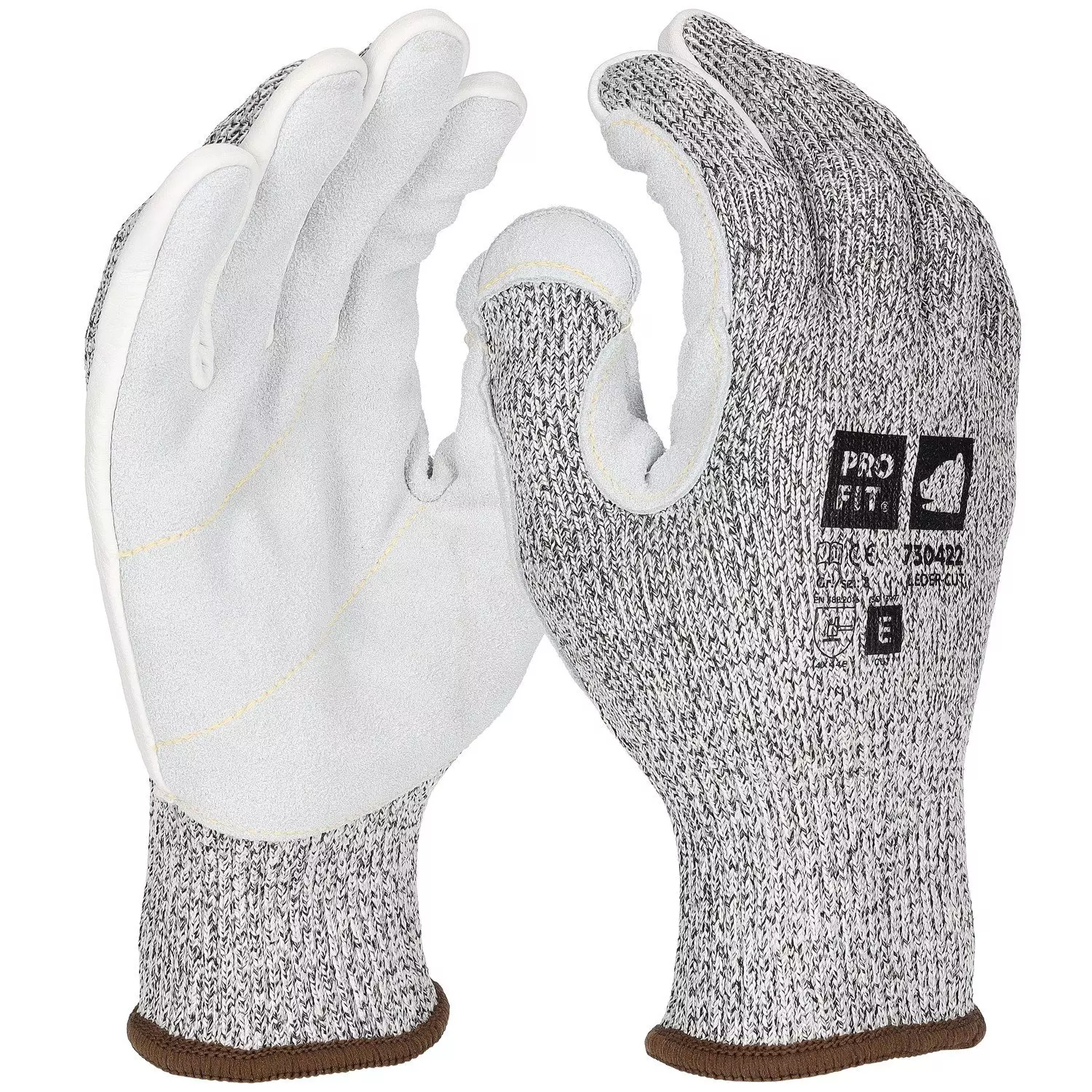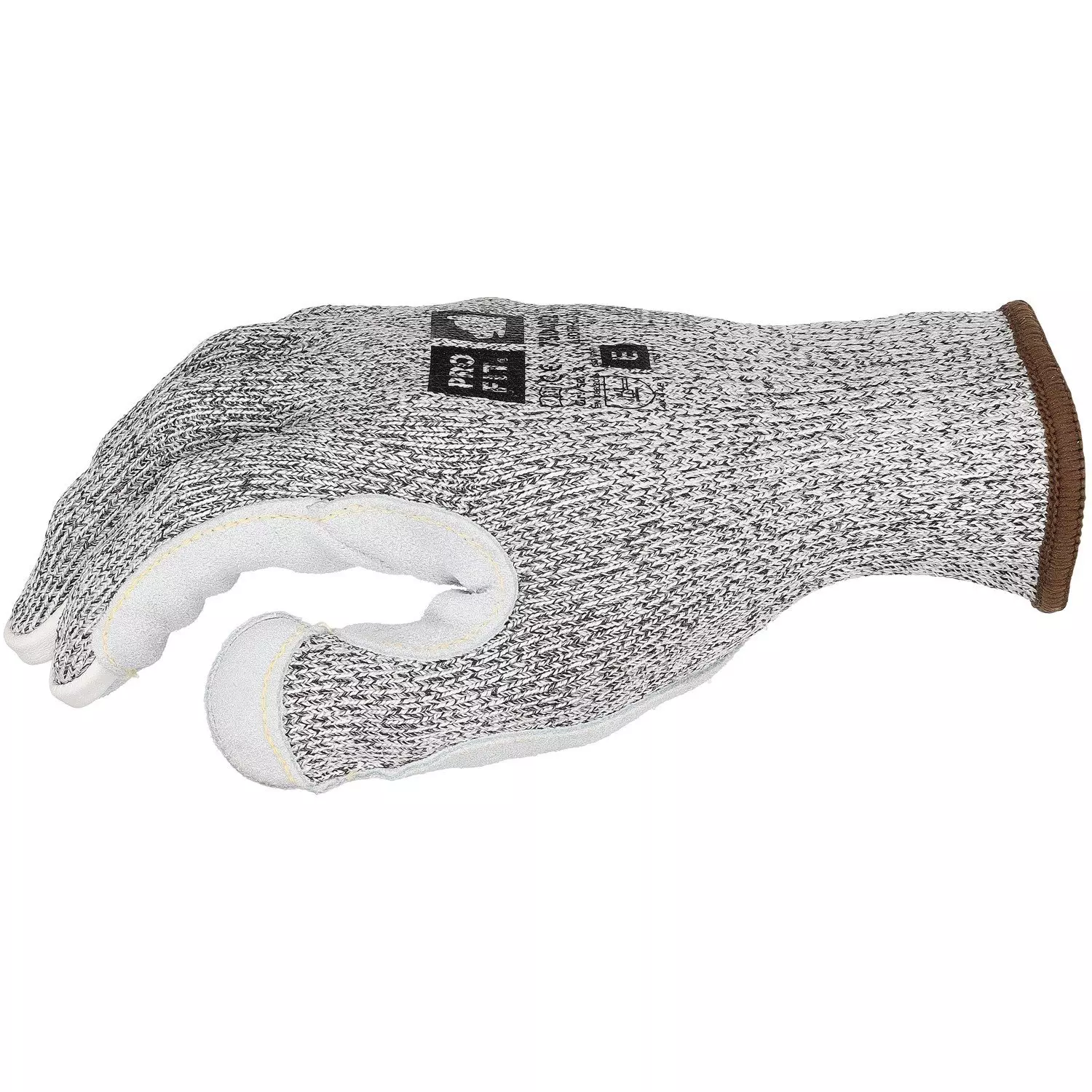

Features You'll Love

Cuff Style · Knit
Determines how the glove secures around the wrist, affecting fit, comfort, and protection coverage at the wrist area.

Glove Features · Seamless Knit
EN 388 · Tear Resistance Level 4, Cut Resistance, ISO 13997 Level E, Abrasion Resistance Level 4
Enjoy superior comfort and dexterity with a smooth, seam-free fit that reduces irritation and enhances your grip.
Offers the highest level of protection against tearing, withstanding a strong force before ripping.
Provides very high protection against cuts from sharp objects, blades, and glass during heavy-duty work.
Offers the highest level of protection against intense rubbing and wear from rough materials.
PRO FIT
Leather Cut E Cut Protection Glove, 12 pairs
Leather Cut E Cut Protection Glove, 12 pairs
5 / 5
152,01 €
Price per 12 pairs
12,67 € / pair
Choose size
Shipping fee is 7,95 € for orders under 1 200,00 €
Features You'll Love

Cuff Style · Knit
Determines how the glove secures around the wrist, affecting fit, comfort, and protection coverage at the wrist area.

Glove Features · Seamless Knit
EN 388 · Tear Resistance Level 4, Cut Resistance, ISO 13997 Level E, Abrasion Resistance Level 4
Enjoy superior comfort and dexterity with a smooth, seam-free fit that reduces irritation and enhances your grip.
Offers the highest level of protection against tearing, withstanding a strong force before ripping.
Provides very high protection against cuts from sharp objects, blades, and glass during heavy-duty work.
Offers the highest level of protection against intense rubbing and wear from rough materials.
Product description
High-performance Category II cut protection glove that combines maximum protection with optimal wearing comfort. The seamless HPPE-glass fiber circular knit liner provides excellent cut protection performance, while the split cowhide leather reinforcements at the most important contact surfaces ensure additional protection. The gloves are certified according to current EN standards and are particularly suitable for demanding work with high cut risks.
Product features:
- Seamless HPPE-glass fiber circular knit liner
- Split cowhide leather reinforcement on palm, fingertips and fourchettes
- Elastic knitted cuff for secure fit
- Breathable material for optimal wearing comfort
- Excellent fit for precise work
Technical details:
- Cut protection level E
- Protection class 4.X.4.4.E. according to EN 388:2016 A1:2018
- Heat protection X.2.X.X.X.X. according to EN 407:2020
Areas of application:
- Secure grip in dry work conditions
- Reliable handling on oily surfaces
- Optimal grip in greasy working conditions
Standards:
- EN ISO 21420:2020
- EN 388:2016 A1:2018
- EN 407:2020